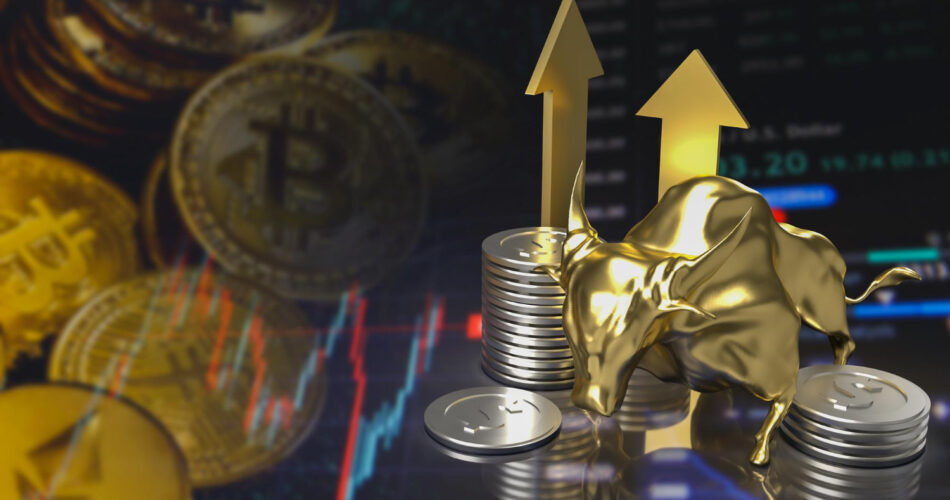Crypto derivatives are rapidly becoming a cornerstone of the digital finance world. Understanding these complex financial instruments is crucial for anyone involved in the cryptocurrency market. This comprehensive guide will provide you with all the essential information you need to navigate the crypto derivatives landscape.
Table of Contents
What are Crypto Derivatives?
The Concept of Crypto Derivatives
Crypto derivatives are financial instruments whose value is derived from an underlying cryptocurrency asset. These assets can be individual cryptocurrencies like Bitcoin or Ethereum, or they can be cryptocurrency indexes that track the performance of a group of cryptocurrencies.
Derivatives in Traditional Finance
The concept of a derivative is not unique to the cryptocurrency world. In traditional finance, derivatives are contracts that derive their value from an underlying asset such as a commodity, bond, equity, or currency. These financial instruments allow investors to speculate on the future price movements of the underlying asset without having to own the asset itself.
Crypto Derivatives and Their Function
In the context of cryptocurrencies, derivatives offer a way for investors to gain exposure to the cryptocurrency market without having to buy or hold the actual cryptocurrency. This can be particularly useful in situations where owning the underlying asset is difficult or impractical.
History of Crypto Derivatives
The Emergence of Crypto Derivatives
The history of crypto derivatives is relatively short, given that the cryptocurrency market itself only came into existence with the creation of Bitcoin in 2009. The first significant development in the history of crypto derivatives came in 2017 when the Chicago Mercantile Exchange (CME) and the Chicago Board Options Exchange (CBOE) launched Bitcoin futures. This was a landmark moment as it marked the first time a traditional financial institution had offered a crypto derivative product.
The Growth and Expansion of Crypto Derivatives
Following the launch of Bitcoin futures, the crypto derivatives market began to grow and expand rapidly. In 2018, Ethereum futures were introduced, and other types of crypto derivatives, such as options and swaps, began to emerge. This period also saw the rise of crypto-specific exchanges like BitMEX and Deribit, which focused on offering a wide range of crypto derivative products.
The Maturation of the Crypto Derivatives Market
The crypto derivatives market has continued to mature and evolve since its early days. Today, there are a wide variety of crypto derivative products available, including futures, options, swaps, and perpetual contracts. These products are offered on a range of platforms, from crypto-specific exchanges to traditional financial institutions.
Traditional Derivatives vs Crypto: A Comparative Analysis
While traditional and crypto derivatives share many similarities, there are also key differences between the two. Here’s a detailed comparison:
| Aspect | Traditional Derivatives | Crypto Derivatives |
|---|---|---|
| Underlying Asset | Traditional derivatives are based on assets like stocks, bonds, commodities, or currencies. | Crypto derivatives are based on cryptocurrencies like Bitcoin, Ethereum, etc. |
| Market Maturity | Traditional derivatives markets are well-established with decades of history. | Crypto derivatives markets are relatively new and still evolving. |
| Regulation | Traditional derivatives are heavily regulated by financial authorities worldwide. | Regulation of crypto derivatives varies by jurisdiction and is still evolving. |
| Access and Participation | Traditional derivatives markets are dominated by institutional participants. Retail participation is often through intermediaries. | Crypto derivatives markets are accessible to anyone with an internet connection, fostering greater retail participation. |
| Trading Hours | Traditional derivatives markets usually have set trading hours. | Crypto derivatives markets operate 24/7, mirroring the trading hours of the cryptocurrency market. |
| Settlement | Traditional derivatives can be both physically settled (delivery of the asset) or cash-settled. | Crypto derivatives are typically cash-settled, though some platforms offer physical settlement. |
| Leverage | Leverage in traditional derivatives is typically lower due to regulatory restrictions. | Crypto derivatives often offer high leverage, increasing both potential gains and risks. |
Both traditional and crypto derivatives offer opportunities for speculation, hedging, and risk management. However, the differences in underlying assets, market maturity, regulation, and accessibility mean that they also come with their own unique risks and rewards.
Benefits of Crypto Derivatives

Risk Management
One of the primary benefits of crypto derivatives is the ability to manage risk. Traders can use derivatives to hedge against potential price movements in the underlying cryptocurrency. For example, if a trader owns Bitcoin and fears its price might fall, they could enter into a derivative contract that profits if the price of Bitcoin does indeed fall. This would offset the loss from the decrease in Bitcoin’s price.
Speculation and Profit Opportunities
Crypto derivatives also provide opportunities for speculation. Traders can profit from price movements in a cryptocurrency without actually owning the cryptocurrency. This can be particularly beneficial in volatile markets, where price movements can be significant.
Access to Leverage
Crypto derivatives often offer access to leverage, allowing traders to take on larger positions than their account balance would otherwise allow. This can potentially lead to larger profits. However, it’s important to note that leverage also increases risk, as it can amplify losses as well as gains.
Market Efficiency
By allowing for speculation and hedging, crypto derivatives contribute to the overall efficiency of the cryptocurrency market. They can help to reduce price volatility and improve liquidity, making the market more stable and predictable.
Here’s a detailed chart summarizing the benefits:
| Benefit | Explanation | Potential Advantage |
|---|---|---|
| Risk Management | Derivatives can be used to hedge against potential price movements in the underlying cryptocurrency. | Protects against adverse price movements. |
| Speculation and Profit Opportunities | Traders can profit from price movements without owning the underlying cryptocurrency. | Allows for profit in volatile markets. |
| Access to Leverage | Derivatives often offer access to leverage, allowing for larger positions. | Can lead to larger profits, but also increases risk. |
| Market Efficiency | Derivatives contribute to market efficiency by reducing volatility and improving liquidity. | Makes the market more stable and predictable. |
How Crypto Derivatives Work

The Basic Mechanism of Crypto Derivatives
At their core, crypto derivatives function similarly to traditional financial derivatives. They are contracts between two or more parties based on the future price of an underlying cryptocurrency. The value of these contracts fluctuates with changes in the price of the underlying asset.
Trading Crypto Derivatives
When trading crypto derivatives, traders don’t actually buy or sell the underlying cryptocurrency. Instead, they enter into contracts that speculate on the future price of the cryptocurrency. If a trader believes the price of a particular cryptocurrency will rise, they can enter into a contract that profits from an increase in price. Conversely, if they believe the price will fall, they can enter into a contract that profits from a decrease in price.
Leverage and Margin in Crypto Derivatives
One key feature of crypto derivatives is the ability to use leverage. Leverage allows traders to borrow funds to take on larger positions than their account balance would otherwise allow. This can amplify profits if the market moves in the trader’s favor, but it can also amplify losses if the market moves against them.
To open a leveraged position, traders need to provide a margin, which is a fraction of the total value of the position. The margin acts as collateral to cover potential losses.
Settlement of Crypto Derivatives
Crypto derivatives can be settled in two ways: physically or cash. Physical settlement involves the actual transfer of the underlying cryptocurrency when the contract expires. Cash settlement, on the other hand, involves the payment of the profit or loss in cash (or cryptocurrency) based on the difference between the contract price and the market price at the time of settlement.
Types of Crypto Derivatives
Crypto Futures
Crypto futures are contracts that obligate the buyer to purchase, and the seller to sell, a specific cryptocurrency at a predetermined price and date. These contracts are typically used by traders to speculate on the future price of a cryptocurrency or to hedge against potential price movements.
Crypto Options
Crypto options give the holder the right, but not the obligation, to buy or sell a cryptocurrency at a specified price within a certain time period. There are two types of options: call options, which give the holder the right to buy, and put options, which give the holder the right to sell.
Crypto Swaps
Crypto swaps are contracts that allow two parties to exchange the cash flows or returns of one crypto asset for another. These contracts are often used for hedging purposes or to gain exposure to a particular cryptocurrency without having to own it directly.
Crypto Perpetual Contracts
Crypto perpetual contracts are a type of futures contract but without an expiry date, allowing traders to hold positions indefinitely. These contracts are popular among traders due to their flexibility and the fact that they closely track the spot price of the underlying asset.
Here’s a detailed comparison guide:
| Crypto Derivative Type | Definition | Use Case | Expiry Date |
|---|---|---|---|
| Crypto Futures | Contracts obligating the buyer to purchase, and the seller to sell, a specific cryptocurrency at a predetermined price and date. | Speculation, Hedging | Yes |
| Crypto Options | Contracts giving the holder the right, but not the obligation, to buy or sell a cryptocurrency at a specified price within a certain time period. | Speculation, Hedging | Yes |
| Crypto Swaps | Contracts allowing two parties to exchange the cash flows or returns of one crypto asset for another. | Hedging, Gaining exposure | Varies |
| Crypto Perpetual Contracts | A type of futures contract without an expiry date, allowing traders to hold positions indefinitely. | Speculation, Hedging | No |
Each type of crypto derivative has its own unique features and advantages, and the choice between them will depend on a trader’s specific needs and risk tolerance.
Crypto Derivatives Examples: Practical Applications
To better understand the concept of crypto derivatives, let’s look at some practical examples:
Bitcoin Futures
Let’s say a trader believes that the price of Bitcoin will rise in the next three months. They could buy a Bitcoin futures contract that allows them to buy Bitcoin at a predetermined price in three months’ time. If the price of Bitcoin is higher than the contract price when the futures contract expires, the trader can buy Bitcoin at the lower contract price and sell it at the current market price, making a profit.
Ethereum Options
Consider a scenario where an investor owns Ethereum but is worried that the price might fall in the next month. To protect against this, they could buy a put option, which gives them the right to sell Ethereum at a specified price within the next month. If the price of Ethereum does fall, they can exercise their option and sell Ethereum at the higher contract price, offsetting their losses.
Crypto Swaps
Suppose a company has a large amount of Bitcoin but needs Ethereum for a specific transaction. They could enter into a crypto swap contract with another party who needs Bitcoin. The two parties would agree to swap a certain amount of Bitcoin for Ethereum at a specified rate. This allows both parties to get the cryptocurrency they need without having to go through the process of selling one cryptocurrency and buying another.
Perpetual Contracts
A trader believes that the price of Litecoin will rise but doesn’t want to commit to a specific timeframe. They could buy a Litecoin perpetual contract, which is similar to a futures contract but without an expiry date. The trader can hold onto the contract for as long as they want, potentially profiting from any increase in the price of Litecoin.
These examples illustrate the versatility of crypto derivatives and how they can be used for speculation, hedging, and other purposes. However, it’s important to remember that trading crypto derivatives involves risk, and traders should fully understand these risks before entering into any derivative contracts.
Risks and Challenges of Crypto Derivatives
Market Volatility
One of the most significant risks associated with crypto derivatives is market volatility. Cryptocurrencies are known for their price volatility, which can lead to substantial changes in the value of derivative contracts. This can result in significant profits, but also substantial losses.
Leverage Risk
Crypto derivatives often offer high levels of leverage, which can amplify both gains and losses. While this can be attractive to traders looking for high returns, it also increases the risk of losses. If the market moves against a trader’s position, they may lose more than their initial investment and could potentially owe additional money to the broker.
Regulatory Risk
The regulatory environment for crypto derivatives is still evolving and varies by jurisdiction. Changes in regulations can have significant impacts on the market, and there is a risk that certain types of derivatives or trading activities could be restricted or banned.
Counterparty Risk
In any derivatives trade, there is a risk that the counterparty will not fulfill their obligations under the contract. This is known as counterparty risk. While this risk is mitigated on regulated exchanges through the use of clearinghouses, it can be a significant concern in over-the-counter (OTC) markets or on less regulated exchanges.
Technological Risk
Trading crypto derivatives often involves the use of complex technology, including trading platforms, wallets, and blockchain technology. These technologies can be vulnerable to glitches, errors, or cyberattacks, which could result in losses for traders.
Liquidity Risk
While the crypto derivatives market has grown significantly, it can still face liquidity issues. In periods of high volatility or stress, it may be difficult to enter or exit positions at desired prices.
Understanding these risks is crucial for anyone considering trading cryptocurrency derivatives. While they offer potential for high returns, they also come with significant risks. As always, it’s important to thoroughly research and understand these products before trading.
Top Crypto Derivatives Exchanges
Several platforms offer cryptocurrency derivatives trading. Each platform has its own unique features and advantages.
| Platform | Pros | Cons |
|---|---|---|
| MEXC | User-friendly interface, wide range of cryptocurrencies, lowest crypto exchange fees, advanced trading features | Platform may be complex for beginners, slow customer service response times |
| Binance | Large number of cryptocurrencies, advanced trading features, high liquidity, user-friendly interface | Reports of delayed customer service responses, potential target for hackers |
| Gate.io | Wide range of cryptocurrencies, advanced trading features, user-friendly interface, educational resources for beginners | Higher trading fees, does not support fiat currency deposits or withdrawals |
| OKX | Large number of cryptocurrencies, advanced trading features, competitive fees, user-friendly interface, educational resources for beginners | Reports of account freezes without prior notice, slow customer service response times |
| BingX | Advanced trading features, high leverage, ability to copy trades from successful traders, user-friendly interface | Smaller selection of cryptocurrencies, less liquidity due to smaller user base |
Future of Cryptocurrency Derivatives
Increasing Institutional Interest
One of the key trends shaping the future of crypto derivatives is the increasing interest from institutional investors. As more institutional investors enter the crypto market, the demand for sophisticated financial products like derivatives is likely to grow. This could lead to the development of new types of crypto derivatives and increased liquidity in the market.
Regulatory Developments
The future of cryptocurrency derivatives will also be heavily influenced by regulatory developments. As regulators around the world continue to grapple with how to oversee the crypto market, changes in regulations could have significant impacts on the crypto derivatives market. This could include new requirements for exchanges, restrictions on certain types of derivatives, or changes in how derivatives are taxed.
Technological Innovation
Technological innovation is another factor that could shape the future of derivatives crypto. This could include the development of new types of derivatives, improvements in trading platforms, or the use of blockchain technology to create decentralized derivatives markets.
Market Maturation
As the crypto market continues to mature, the role of derivatives is likely to become increasingly important. Derivatives can contribute to market efficiency by allowing for more effective price discovery and risk management. As more traders and investors understand and use these tools, the market for crypto derivatives is likely to grow and become more sophisticated.
Potential Risks and Challenges
While the future of crypto derivatives looks promising, there are also potential risks and challenges. These include the risk of market volatility, the potential for regulatory changes, and the technical risks associated with trading complex financial products. As the market evolves, traders and investors will need to stay informed and adapt to these changes.
Conclusion
Crypto derivatives are a complex but exciting part of the cryptocurrency market. They offer numerous opportunities for traders but also come with significant risks. As the market continues to evolve, understanding crypto derivatives will become increasingly important.
FAQs
What are crypto derivatives?
Crypto derivatives are financial contracts that derive their value from an underlying cryptocurrency asset. They allow investors to speculate on the future price of a cryptocurrency without actually owning the asset.
How to trade crypto derivatives?
To trade crypto derivatives, you first need to open an account on a platform that offers these products, such as Mexc, Binance, and Gate.io. Once your account is set up, you can choose the type of derivative you want to trade (e.g., futures, options), select the underlying cryptocurrency, and enter into a contract based on your market predictions.
Where can I buy crypto derivatives?
Who invest in crypto derivatives?
A wide range of individuals and institutions invest in crypto derivatives. This includes retail investors, professional traders, hedge funds, and other financial institutions. Crypto derivatives can be used for various purposes, including speculation, hedging, and risk management.


